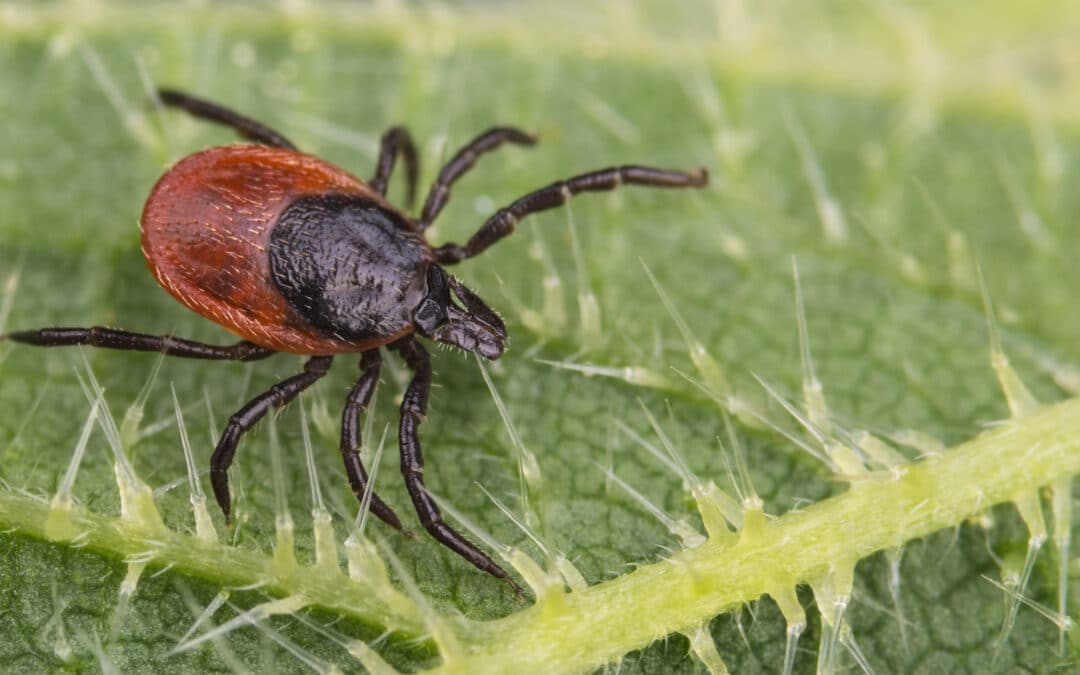Lyme disease is a bacterial infection caused by a spirochete—a corkscrew-shaped bacterium called Borrelia burgdorferi. It is transmitted by deer and black-legged ticks, typically found in wooded areas. Lyme is called “The Great Imitator” because its symptoms mimic many other diseases. This can lead to a misdiagnosis such as chronic fatigue syndrome, multiple sclerosis, rheumatoid arthritis, fibromyalgia, and neuropsychiatric illnesses, including depression, Alzheimer’s, Parkinson’s, and ALS (Lou Gehrig’s disease). Lyme symptoms can affect any body organ, including the brain and nervous system, muscles and joints, and the heart. Chronic Lyme can become a debilitating disease.
Although Lyme is considered an East Coast illness, it is found throughout the United States and over sixty other countries. The Centers for Disease Control (CDC) estimates that 300,000 people are diagnosed with Lyme disease every year in the U.S. alone. However, since Lyme is often misdiagnosed as other illnesses, many experts believe the actual number of cases is much higher. Although Lyme affects people of all ages, the CDC notes that it is most common in children, older adults, and others who spend time outdoors (higher exposure to ticks).
Lyme Disease Symptoms
The following are early symptoms of Lyme disease:
- Tick exposure or bite
- Red, expanding skin rash
- Flu-like symptoms
- Facial muscle weakness or paralysis
- Fainting, shortness of breath, heart palpitations (Lyme Carditis)
- Shooting pains that may interfere with sleep
- Pain or swelling in large joints
- Severe headaches
- Lightheadedness
Later symptoms of Lyme include:
- Fatigue
- Joint pain
- Twitching
- Headaches and muscle aches
- Cognitive impairment (memory loss, brain fog)
- Heart-related symptoms (palpitations, shortness of breath)
- Digestive/stomach symptoms (pain, indigestion, food sensitivities)
- Sleep impairment
- Neuropathy (nerve pain, tingling, hot/cold sensitivity, numbness)
- Psychiatric symptoms (depression, mood changes)
Lyme Co-Infections
The tick bite can transmit many other bacteria, viruses, and protozoans all at the same time. The most common tick-borne diseases in the United States include Lyme, babesiosis, bartonellosis, anaplasmosis, ehrlichiosis, relapsing fever, tularemia, and Rocky Mountain spotted fever (RMSF). When diseases are acquired together like this, they are called co-infections. It is common for a person with Lyme also to have other co-infections. Compounding co-factors can also include chronic inflammation, immune suppression, and elevated levels of heavy metals and toxins. Since these factors can create a complex pathology of Lyme, successful treatment requires multilayered solutions.
There is controversy in science and medicine regarding Lyme disease. Two prominent medical societies hold different views on the best approach to diagnosing and treating Lyme disease. The first is the Infectious Diseases Society of America (IDSA), stating that Lyme disease is “hard to catch and easy to cure” with a short course of antibiotics and also claiming that spirochetal infection cannot persist in the body after that. This society also denies the existence of chronic Lyme disease. In contrast, the International Lyme and Associated Diseases Society (ILADS) states that Lyme disease is often complex to diagnose and treat, resulting in persistent infection in many people. ILADS recommends individualized treatments based on the severity of symptoms, the co-infections presence, and a person’s response to treatment.
Lyme Disease Treatment at Sanoviv Medical Institute
The Sanoviv medical team has treated many cases of chronic Lyme disease, including those that were first misdiagnosed. Our medical team has seen many cases with different symptoms, often “mimicking” other chronic illnesses. When someone has Lyme disease, they need to strengthen their immunity, detoxify their system, and reduce inflammation while at the same time attacking the infection from multiple angles. Every facet of this complex condition must be targeted to optimize a successful outcome. At Sanoviv, we target all of these and more. One of our key treatments is whole-body hyperthermia, along with ozone therapy, hyperbaric oxygen, IV artesunate, and other immune-enhancing IV treatments. We also offer a variety of advanced detoxification therapies.
The Sanoviv integrative approach to treating Lyme disease is producing remarkable results in many patients, offering new hope for those struggling with this debilitating chronic illness.

